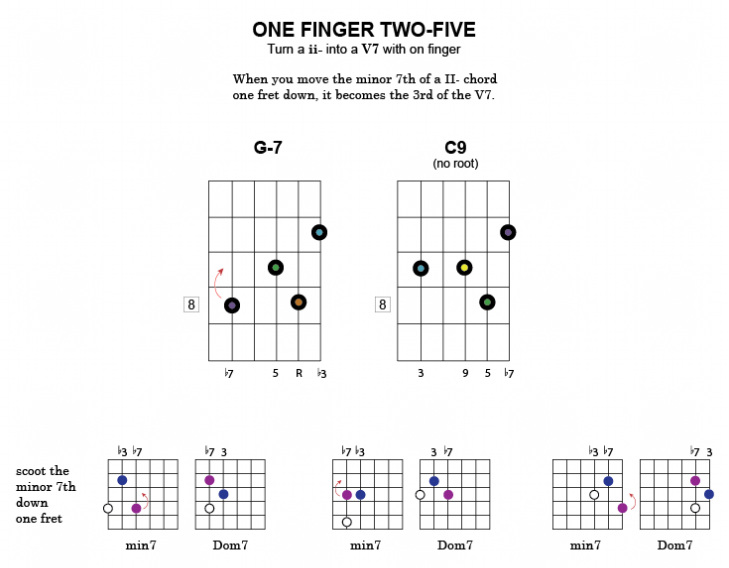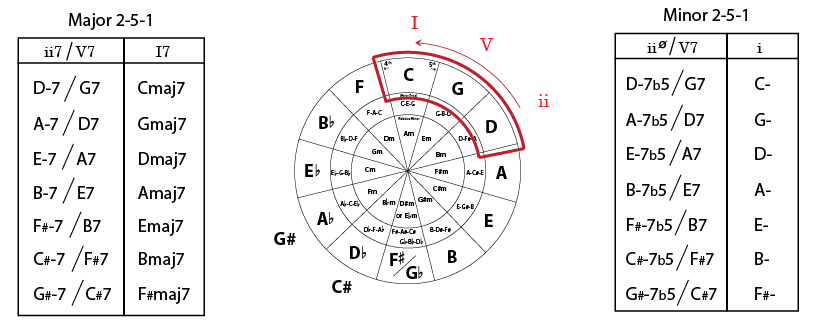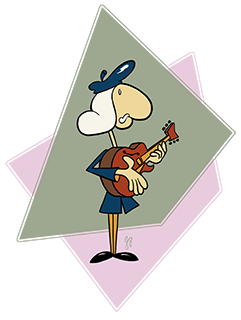|
When you move the minor 7th of a II- chord one fret down, it becomes the 3rd of the V7 chord in a 2-5-1 progression.
0 Comments
When I first started taking jazz guitar lessons, I put a lead sheet up and my teacher noted all the 2-5-1 progressions. I asked how I could spot them. He said you just kind of learn to see them and suggested I make some flash cards to learn them all. I made some online flash cards which are linked in another post. The PDF below lists all the major and minor 2-5-1 turnarounds and also shows how the the 2, 5, and 1 in any diatonic sequence are actually all neighbors in the circle of 4ths. If you go counter-clockwise on the circle of fifths, you see each key moving in fourths. Any three counter-clockwise movements of that cycle is a 2-5-1 progression in the key of the last note.
The pdf also shows the Major and Minor diatonic progressions. The chords in a Major diatonic progression are identical to those in the Major scale for any particular scale. For a C major scale, the root is C, and the "2" chord is the same as the second note in the C Major scale, a whole step to D. The Dm chord is harmonious with Cmajor, because all the notes in Dm are in Cmaj. The Dmaj chord won't sound as harmonious, because the major third of D (which is F#) is not in the C Major scale. Flattening the third of Dmaj to F keeps it harmonious with C Major, and makes your chord a Dm. This means if you want to solo over a song using chords only in the diatonic progression of a Major key (C in this case), you can play any note of the C Major scale and you will always be in some sort of relative harmony with any of the diatonic chords played under it: Cmaj7, Dm7, Em7, G7, Am7 and B-7b5. With a minor 2-5, the progression is based off the harmonic minor scale.
|
HI!I'm teaching myself jazz guitar... these are my notes. Archives
February 2020
Categories
All
|
||||||





 RSS Feed
RSS Feed
